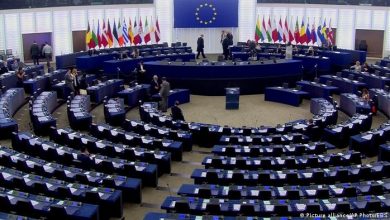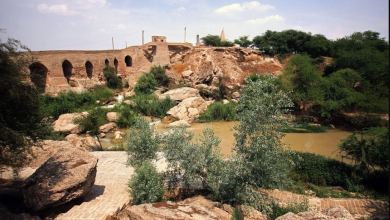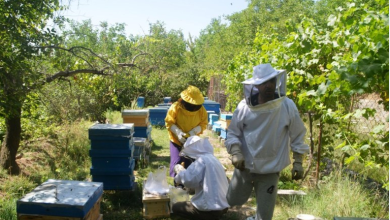
Ahwaz independence from Iran: opportunities and challenges
The geographical importance of Ahwaz
The most powerful reason for Iran’s occupation of the Ahwaz state is that it is rich in natural resources of oil and gas, as more than 90 percent of Tehran’s total production of natural gas and oil comes from Ahwaz, and the oil reserves in Ahwaz constitute 10 percent of the world’s oil reserves, and 18 percent of gas reserves Globally, Ahwaz produces 40 percent of Iran’s steel, and Ahwaz power stations provide 25 percent of Iran’s electric power, and Ahwaz petrochemical plants produce half of Iran’s production, and there is 40 percent of Iranian fresh water in Ahwaz, and therefore it can be said that the Ahwaz economy constitutes 75 percent of the output Iranian local, and Al-Ahwaz has vast areas of fertile agricultural land in which one of the region’s largest rivers flows, the Karun River, which irrigates the fertile agricultural plains. The Ahwaz region is the main producer of sugar and corn crops in Iran, and the resources in this region (Ahwaz) contribute more than half of Iran’s net national product and more than 80 percent of the value of exports in Iran, and through the ports of Ahwaz, 80 percent of the export and import operations take place in the Persian country.
Ahwaz uprisings
History records 15 Ahwaz uprisings and revolution against the Iranian central regime, and they are as follows:
- The Khazali Guard uprising led by the martyrs Shalash and Sultan on July 22, 1925 AD.
- The uprising of the Ka’b al-Dibis clan led by its leader Sheikh Haider al-Kaabi in the Minaw area on the Dibis River in 1940 AD.
- The Gypsy uprising led by Sheikh Jasib bin Sheikh Khazal Al Kaabi in 1943 AD.
- An uprising led by Sheikh Abdullah bin Sheikh Khazal Al Kaabi in 1944 AD.
- The Second Intifada of Bani Taraf in 1945 AD.
- An uprising led by Sheikh Mazkhour Al-Kaabi in 1946 AD and his supporters.
- The uprising of the Nassar clan in 1946 AD.
- An uprising led by Sheikh Younis Al-Asi in the areas of Khafagiya and Busaiteen in 1949.
- The political organization appeared in Al-Ahwaz in 1956 AD, which bore the name of the Arabistan Liberation Front, and Cairo supported it, whether weapons, money or the media, until the leaders of this organization were assassinated after the Persian Sawak provided the Shah with information about the whereabouts of the Ahwaz leaders who prepared to launch a revolution against the regime The Shah after their meeting with the leader Gamal Abdel Nasser in Cairo, until the arrest of Muhyiddin Nasser family and Issa Al Mazkhor and the escape of the Nasser family and hundreds of Ahwaz youth in the year 1963 AD before they were liquidated.
- In 1979, after the fall of the Shah’s regime, the Al-Ahwaz people worked to exploit the opportunity and get out of Iran’s control, but the Khomeini regime came harsher on them and destroyed all the steps taken by the Ahwaz people.
- Six years after the Khomeini regime, i.e. in 1985 AD, the Ahwaz uprising sparked again after an absence, but it was met with a very fierce reaction from the Khomeini regime.
- The latest uprising, which bore the name “April Al-Ahwaz Intifada,” which is the uprising that began in mid-April 2015, after the issuance of the document of Iranian President Muhammad Khatami, which stated that the Iranian regime would bring about a complete change to the demography of Al-Ahwaz after Khatami demanded in the document the displacement and distribution of two-thirds of the population of Al-Ahwaz on different Iranian provinces and replace them with Iranians.
- Water Intifada 2021, due to Iran stealing Ahwaz water and delivering it to the Persian provinces, resulting in dozens of martyrs and wounded
Al-Ahwaz’s future moves
Despite the difficult challenges facing Al-Ahwaz inside from the repression and assassination at the hands of the Iranian Revolutionary Guards however, Ahwaz has an international movement whose features have begun to become clear in the last three decades, after the formation of the “Project to restore legitimacy to the Arab state of Al-Ahwaz” led by the grandson of the last ruler of Ahwaz, Sheikh Khazal Al-Kaabi.
In this regard, the Chairman of the Executive Committee for the Restoration of the Legitimacy of the Al-Ahwaz State, Dr. Aref Al-Kaabi, says: “The project to restore the legitimacy of the Al-Ahwaz state is proceeding according to the plan drawn up for it, despite the difficulties and challenges it faces as it moves with an Arab international and global horizon. The Ahwaz delegation representing the project to restore legitimacy to the state of Ahwaz moved Arab and international and communicated the details and mechanism of the project and its important axes related to the political and legal aspect. Since the inception of the project, the Legal Committee has begun its work to prepare an integrated legal file containing important documents, agreements, correspondences, treaties and maps of Ahwaz in the past era and the beginning of the nineteenth century until 1925 AD, when he was the last ruler To Al-Ahwaz Sheikh Khazal after we sought to the British and Turkish Foreign Affairs as the inheritors of the Ottoman Archives in order to obtain documents and files related to Al-Ahwaz and its political and legal history, and through the archives in these two countries to complete the legal file that will be submitted to the international institutions related to the United Nations such as the International Court of Justice and the International Criminal Court as well as communication With the committees in UNICEF for the Protection of the Ahwaz Child and UNESCO for the Protection of Arab Heritage and Culture, the project to restore legitimacy to the state of Ahwaz in line with all international laws and norms that provide for the independence of peoples and the return of their rights and self-determination
Now, the Executive Committee is seeking to restore the legitimacy of the Al-Ahwaz state by implementing five steps to activate the issue at the international level, which are as follows:
First: The establishment of a conference for the project of restoring Al-Ahwaz legitimacy in accordance with the legal frameworks and legitimacy after extrapolating the situation and the stages that the Al-Ahwaz issue has gone through, and the twists and turns taken by some Arab countries.
Second: Appearing and proposing at the Arab and international levels to support the struggle of the Al-Ahwaz people after the past nine decades to preserve the permanence of the existence of this people with its Arab identity.
Third: Containing all the Ahwaz political currents and organizations that demand the rights of the Ahwazis to convey their voice to the world, and cooperating to publicize the oppression of this Arab people.
Fourth: Standing before the Iranian regime in accordance with the proposal of an integrative project that adopts the issue of Ahwaz legally and according to the dimensions of the important and sensitive stage that our Arab and regional region is going through.
Fifth: Providing legal cover for all the struggle actions that fall within two frameworks, the first is the popular movement inside Al-Ahwaz, and the second framework is through the external movement at the level of the liberation organizations carried out by the Ahwazis in the countries of exile, such as conferences, seminars, meetings, and organizing marches, demonstrations and protest stands in front of international centers and institutions. And submit files to human rights organizations regarding violations of human rights by the occupying Iranian regime in Ahwaz.
The review of the history of Ahwaz and the challenges faced by the Ahwaz people at home from the suppression of the Revolutionary Guards, and the striking of the fundamentalist Brotherhood, which was founded under the auspices of the Iranian intelligence, to strike the Ahwaz national, similar to what the fundamentalist movements did in the Gaza Strip to strike the central Palestinian national cause, Then the prominent Ahwaz leaders on the external level moved recently, in conjunction with their activity in the current uprisings inside, are making the coming days pregnant with many for Tehran, and the Ahwaz Arabs remain in front of real opportunities to obtain the right to vote for independence from Tehran, despite the challenges it faces.



